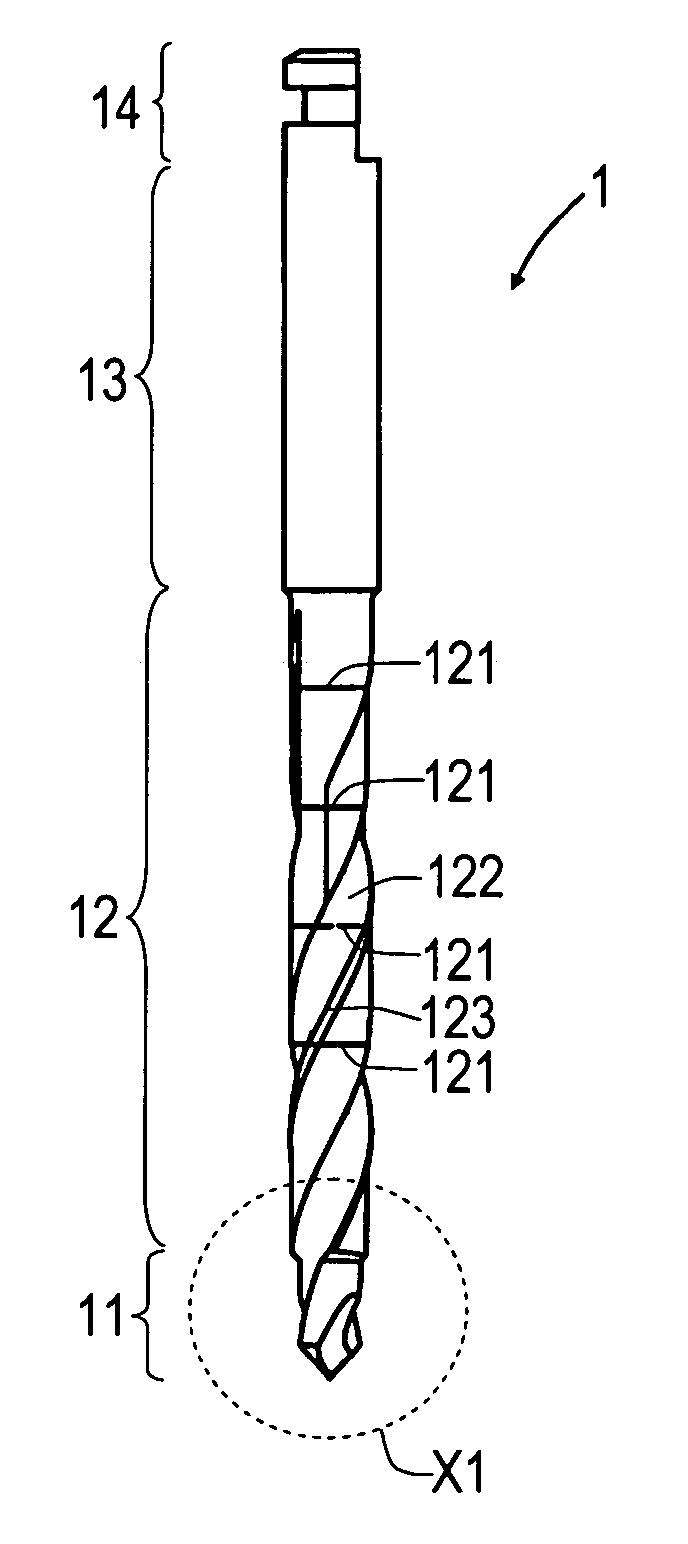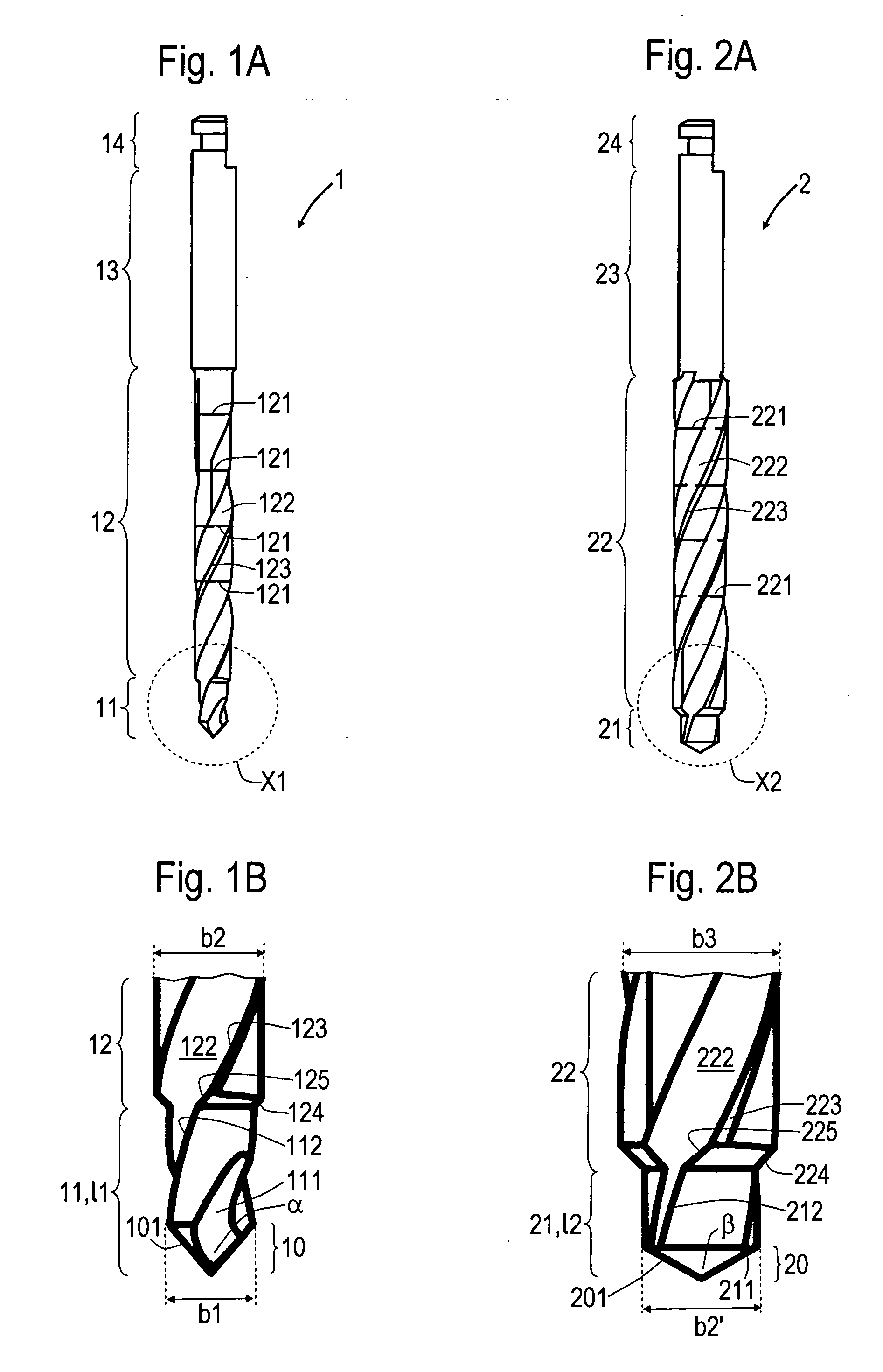Pilot drill, step drill, and drill set for dental implant technology
a technology of dental implants and drill sets, which is applied in the field of pilot drills, step drills, and drill sets for dental implants, can solve the problems of many drilling instruments and working steps, multiplicity of instruments, and high cost of 3-stage milling cutters
- Summary
- Abstract
- Description
- Claims
- Application Information
AI Technical Summary
Benefits of technology
Problems solved by technology
Method used
Image
Examples
Embodiment Construction
[0077] The following statement applies to the entire further description: where reference numerals are contained in a figure to clarify the drawing but are not explained in the directly associated text of the description, reference is made to where they are mentioned in previous descriptions of figures. In the interest of overall clarity, components are not usually designated by reference numerals repeatedly in the same figures or in subsequent figures if it is clearly evident from the drawing that they are “recurrent” components.
FIGS. 1A and 1B
[0078] The pilot drill 1 serves for the preparation of a step bore in the form of a blind hole, to be introduced into a jawbone, for receiving a dental implant. At the apical end of the pilot drill 1 there is the pilot tip 10, with the tip cutting edges 101 arranged on it, which form the tip angle α. A pilot guide 11 extends from the pilot tip 10 in the direction of the coronal end of the pilot drill 1. Lying above the pilot guide 11 is the ...
PUM
 Login to View More
Login to View More Abstract
Description
Claims
Application Information
 Login to View More
Login to View More - R&D
- Intellectual Property
- Life Sciences
- Materials
- Tech Scout
- Unparalleled Data Quality
- Higher Quality Content
- 60% Fewer Hallucinations
Browse by: Latest US Patents, China's latest patents, Technical Efficacy Thesaurus, Application Domain, Technology Topic, Popular Technical Reports.
© 2025 PatSnap. All rights reserved.Legal|Privacy policy|Modern Slavery Act Transparency Statement|Sitemap|About US| Contact US: help@patsnap.com



